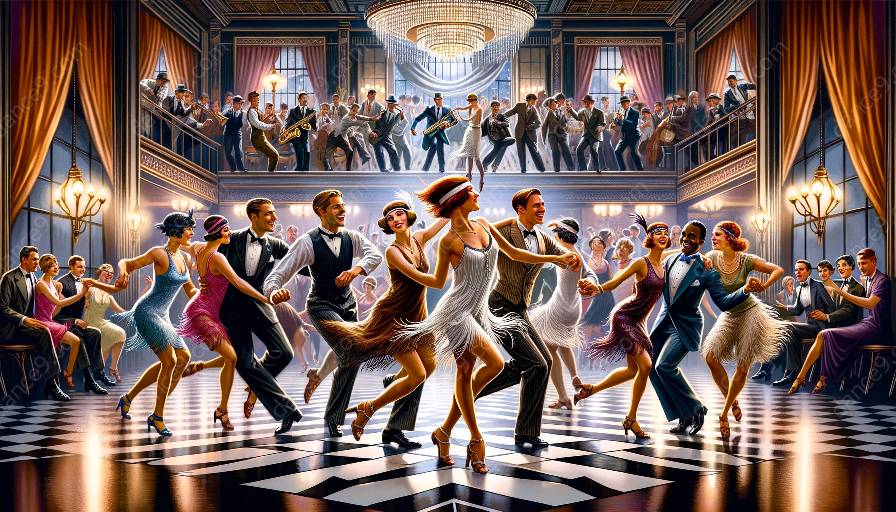The history of dance is filled with diverse and fascinating traditions that have evolved and influenced each other over centuries. African and European dance traditions have had a significant impact on the development of various dance styles, including the iconic Charleston dance. This topic cluster will delve into the cultural backgrounds of African and European dance traditions, explore their influence on the Charleston dance, and provide insights on how to incorporate these influences in dance classes.
African Dance Traditions
African dance is deeply rooted in the cultural and spiritual practices of different African communities. It encompasses a wide range of styles, each with its own unique movements, rhythms, and symbolic meanings. Traditional African dances often reflect the daily activities, rituals, and celebrations of the people.
Dances in Africa are not only forms of entertainment but also important means of communication. They convey history, social structure, and religious beliefs, preserving the cultural heritage of the communities. The use of polyrhythmic beats, dynamic body movements, and expressive gestures are essential elements of African dance traditions.
European Dance Traditions
European dance traditions have been shaped by the rich cultural diversity and historical influences of the continent. From the elegant court dances of the Renaissance period to the lively folk dances of different regions, European dance traditions boast a wide array of styles and techniques.
Over the centuries, European dance has evolved through interactions with various cultures, including the influences of African dance traditions during the colonial era. These interactions have contributed to the development of new dance forms and movements that continue to inspire and influence contemporary dance styles.
The Influence on Charleston Dance
The Charleston dance, which gained popularity in the 1920s, is a vibrant and energetic dance style associated with the jazz age. It features fast-paced footwork, syncopated rhythms, and playful movements that reflect the dynamism of the era. The roots of the Charleston dance can be traced back to both African and European dance traditions.
Elements of African dance, such as syncopated rhythms, improvisation, and rhythmic body isolations, have contributed to the lively and rhythmic nature of the Charleston dance. On the other hand, European dance traditions have influenced the structured forms and partnered movements that are characteristic of the Charleston.
Incorporating Influences in Dance Classes
Understanding the cultural and historical foundations of African and European dance traditions can enrich dance classes by providing students with a deeper appreciation of the dance styles they are learning. By incorporating elements from these traditions, dance instructors can create a more inclusive and culturally diverse learning environment.
When teaching the Charleston dance, instructors can introduce students to the historical background of the dance and highlight the influences of African and European dance traditions on its development. Additionally, they can incorporate movements and rhythms inspired by these traditions into their choreography, allowing students to experience the fusion of diverse cultural influences in their dance practice.
Conclusion
The cross-cultural exchange between African and European dance traditions has played a pivotal role in shaping the evolution of dance styles around the world, including the Charleston dance. By exploring the cultural roots and influences of these traditions, dancers and instructors can gain a deeper understanding of the rich tapestry of dance history and create more engaging and inclusive dance experiences.













































































